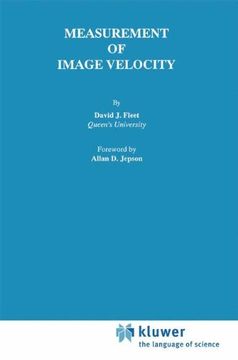Share
Measurement of Image Velocity (The Springer International Series in Engineering and Computer Science) (in English)
David J. Fleet (Author)
·
Springer
· Paperback
Measurement of Image Velocity (The Springer International Series in Engineering and Computer Science) (in English) - David J. Fleet
$ 104.20
$ 109.99
You save: $ 5.79
Choose the list to add your product or create one New List
✓ Product added successfully to the Wishlist.
Go to My WishlistsIt will be shipped from our warehouse between
Tuesday, July 09 and
Wednesday, July 10.
You will receive it anywhere in United States between 1 and 3 business days after shipment.
Synopsis "Measurement of Image Velocity (The Springer International Series in Engineering and Computer Science) (in English)"
Measurement of Image Velocity presents a computational framework for computing motion information from sequences of images. Its specific goal is the measurement of image velocity (or optical flow), the projection of 3-D object motion onto the 2-D image plane. The formulation of the problem emphasizes the geometric and photometric properties of image formation, and the occurrence of multiple image velocities caused, for example, by specular reflections, shadows, or transparency. The method proposed for measuring image velocity is based on the phase behavior in the output of velocity-tuned filters. Extensive experimental work is used to show that phase can be a reliable source of pure image translation, small geometric deformation, smooth contrast variations, and multiple local velocities. Extensive theorectical analysis is used to explain the robustness of phase with respect to deviations from image translation, and to detect situations in which phase becomes unstable. The results indicate that optical flow may be extracted reliably for computing egomotion and structure from motion. The monograph also contains a review of other techniques and frequency analysis applied to image sequences, and it discusses the closely related topics of zero-crossing tracking, gradient-based methods, and the measurement of binocular disparity. The work is relevant to those studying machine vision and visual perception.
- 0% (0)
- 0% (0)
- 0% (0)
- 0% (0)
- 0% (0)
All books in our catalog are Original.
The book is written in English.
The binding of this edition is Paperback.
✓ Producto agregado correctamente al carro, Ir a Pagar.

